| Columns Retired Columns & Blogs |
Mårten Design Coltrane loudspeaker Measurements
Sidebar 3: Measurements
I measured the Mårten Design Coltrane with the speaker biwired with the supplied Jorma cables and supported by the Black Diamond Racing cones and pucks, to allow its reflex port to be raised sufficiently high above the floor. Because of the speaker's bulk, it was not possible to raise it several feet from the floor for the acoustic measurements, as is my normal practice. I therefore had to window the time-domain data more aggressively than usual, to eliminate the effect of a strong floor reflection. This reduces the resolution of the farfield measurements in the midrange, but was unavoidable.
The Coltrane was slightly less sensitive than specified, at an estimated 87dB(B)/2.83V/m. This is average—87dB is the average sensitivity of the 575 loudspeakers I have measured over the past 15 years—but the Coltrane's impedance plot (fig.1) reveals it to be quite a demanding load. The impedance magnitude remained below 5 ohms throughout the bass, regardless of the setting of the rear-panel rotary switch. This switch affects the relative heights of the two reflex impedance peaks. With the switch set to its maximum position, the upper peak is at its highest, the lower peak at its lowest; set to its lowest position, the opposite is the case, though in that case the impedance drops to an amplifier-punishing 1.9 ohms at 43Hz. With the switch set to its central position, which is how Michael Fremer auditioned the Coltranes, the impedance remained between 2.5 and 3 ohms from 20 to 100Hz.

Fig.1 Mårten Design Coltrane, electrical impedance (solid) and phase (dashed) with rear-panel switch set to (from top to bottom at 40Hz): "5," "3," "0" (2 ohms/vertical div.).
The generally higher magnitude of the Coltrane's impedance in the upper midrange and treble will mean that the speaker will sound a little tilted-up when used with tube amplifiers that have a higher-than-normal output impedance. However, the fact that the reflex "saddle" in the magnitude trace occurs at a very low 20Hz suggests excellent bass extension. However, the shape of the impedance trace implies a rather underdamped alignment, as Mikey noted in his auditioning.
There are a couple of small glitches in the impedance traces, at 60 and 190Hz, but I couldn't find any panel resonances that would have led to this behavior. In fact, the light, stiff construction of the Coltrane's enclosure proved remarkably free of resonances, as revealed by fig.2, a waterfall plot calculated from the output of an accelerometer fastened to the curved sidewall 12" from the base. As Celestion showed 20 years ago, this kind of construction is very effective at eliminating cabinet resonances in the critical midrange. What resonances are present tend to be much higher in frequency than usual, and because the low mass of the panels doesn't store much energy, they decay very quickly.
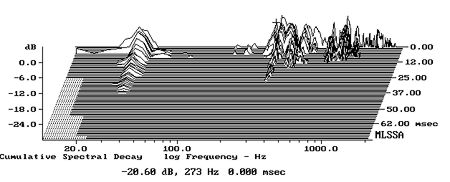
Fig.2 Mårten Design Coltrane, cumulative spectral-decay plot calculated from the output of an accelerometer fastened to the cabinet's side panel 12" from base (MLS driving voltage to speaker, 7.55V; measurement bandwidth, 2kHz).
From right to left, fig.3 shows the individual outputs of the midrange/tweeter section on the tweeter axis, the two woofers (which behave identically), and the port. The latter is the broad peak centered on the 15–30Hz octave, but the absolute level is a little low to deliver the full extension promised by the port tuning frequency. A couple of lower-midrange resonant peaks are evident, but these are relatively low in level; their audibility will be ameliorated by the fact that the port faces the floor.
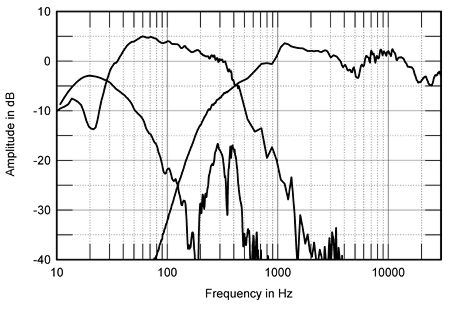
Fig.3 Mårten Design Coltrane, acoustic crossover on tweeter axis at 50", corrected for microphone response, with the nearfield midrange, woofers, and port responses plotted below 350Hz, 440Hz, and 900Hz, respectively.
The woofers broadly peak between 30 and 300Hz (though the height of this peak will be exaggerated somewhat by the nearfield measurement technique), and cross over to the midrange unit higher than the specified 300Hz. The rollout slope of the woofers is free from breakup modes. The high-pass slope of the midrange unit's rollout is initially quite slow, but steepens to what appears to be a third-order slope below 250Hz. There is a lack of energy in the octave between 3 and 6kHz, and while the tweeter output is shelved down a little above 16kHz, its response extends smoothly above the 30kHz limit of this graph.
Fig.4 shows the Coltrane's overall response on the tweeter axis, spliced to the complex sum of the nearfield midrange, woofer, and port responses, taking into account acoustic phase and the distance of each sound source from the nominal farfield point. Note the excellent bass extension evident in this graph. The overall balance is flat, though it can be seen from this graph that the upper midrange is a little suppressed, the presence region a little boosted, and the mid-treble a little recessed. Which of these characteristics becomes dominant subjectively—ie, whether the speaker will sound forward and detailed or laid-back and perhaps a bit recessed—will depend to a large extent on the music being played. However, I note that even after Mikey had optimized the Coltranes' setup, he still found the speaker "a bit bright and spotlit on top, slightly lean on bottom."
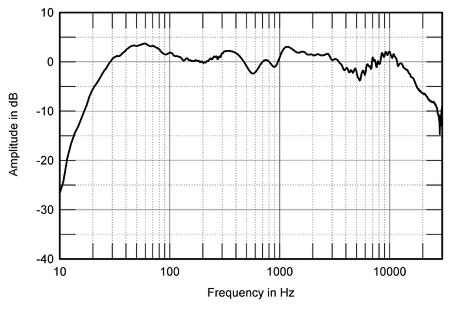
Fig.4 Mårten Design Coltrane, anechoic response on tweeter axis at 50", averaged across 30 degrees horizontal window and corrected for microphone response, with the complex sum of the nearfield midrange, woofer, and port responses, taking into account acoustic phase and distance from the nominal farfield point, plotted below 300Hz.
A loudspeaker's balance depends not only on its on-axis response, but also, to a large extent, on the room's reverberant field, which in turn will depend on the speaker's dispersion. The Coltrane's horizontal radiation pattern, normalized to the tweeter-axis response, is shown in fig.5. The tweeter has limited dispersion above 10kHz, which is why the averaged response shown in fig.4 is more rolled-off in the top audio octave than that in fig.3. There is also an off-axis flare at the bottom of the tweeter passband that will compensate for the lack of on-axis energy in the same region. Both these factors will contribute to the sensitivity to toe-in that Mikey mentioned in his auditioning notes. But note how even the contour lines appear below 10kHz in this graph, which correlates with stable stereo imaging. In the vertical plane (fig.6), the speaker's output doesn't change much as long as you sit on or below the tweeter axis. However, sit with your ears level with or higher than the top of the cabinet and the top octaves shelve up a little, and a suckout eventually develops at the upper crossover frequency.
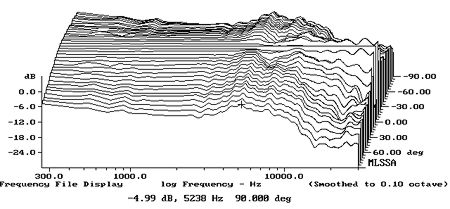
Fig.5 Mårten Design Coltrane, lateral response family at 50", normalized to response on tweeter axis, from back to front: differences in response 90 degrees–5 degrees off-axis, reference response, differences in response 5 degrees–90 degrees off-axis.
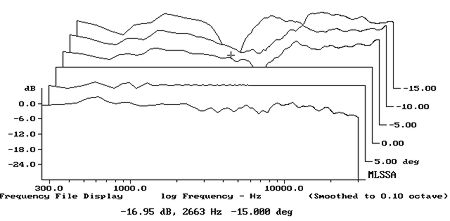
Fig.6 Mårten Design Coltrane, vertical response family at 50", normalized to response on tweeter axis, from back to front: differences in response 15 degrees–5 degrees above axis, reference response, differences in response 5 degrees–10 degrees below axis.
The Coltrane's step response on the tweeter axis (fig.7) is marred at the 7.8ms mark by the floor reflection mentioned earlier. But looking at fig.7 more closely, the first, positive-going spike is the tweeter, followed by the negative-going midrange unit, the output of which lies very slightly behind the tweeter's negative-going overshoot. The slow, positive-going output at the 4.5ms mark comprises the overshoot of the midrange unit's output, which overlays the slower positive-going rise of the woofers. Not apparent in this graph are some small reflections of the tweeter's output, perhaps from the baffle edges, which give rise to some slight mid-treble hash in the speaker's cumulative spectral-decay plot (fig.8).
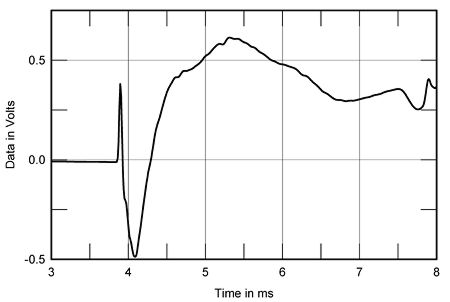
Fig.7 Mårten Design Coltrane, step response on tweeter axis at 50" (5ms time window, 30kHz bandwidth).
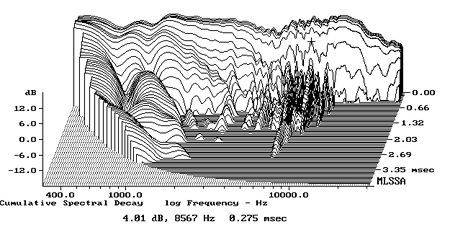
Fig.8 Mårten Design Coltrane, cumulative spectral-decay plot at 50" (0.15ms risetime).
Overall, the Mårten Design Coltrane offers pretty good measured performance. However, that low impedance in the bass region mandates use with an amplifier both capable of sourcing serious current and keeping those woofers under control. We almost never comment on packaging, but I must compliment Mårten Design on that for the Coltrane, which made handling it easier than I had anticipated for such a large, bulky speaker.—John Atkinson
- Log in or register to post comments




































